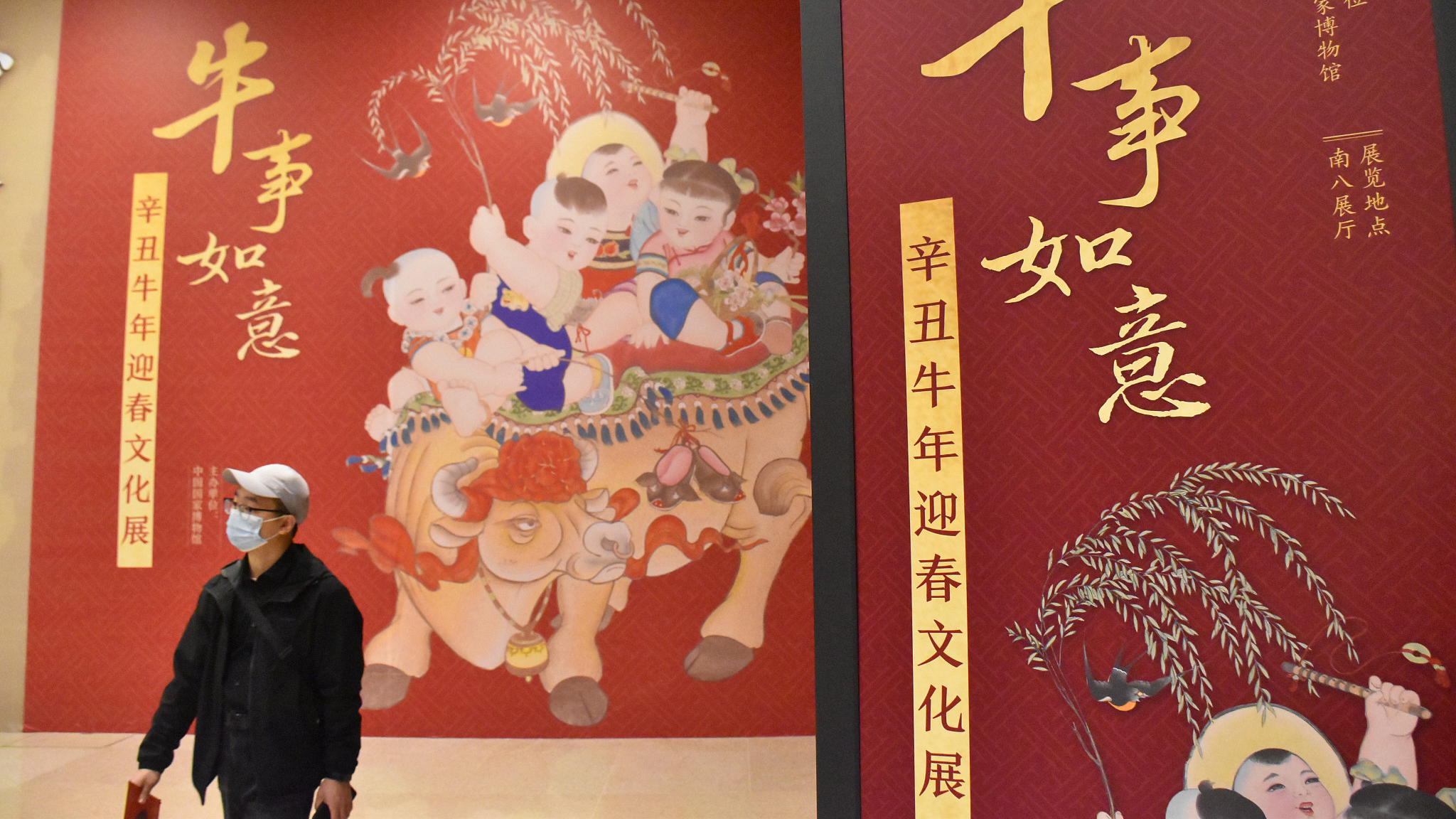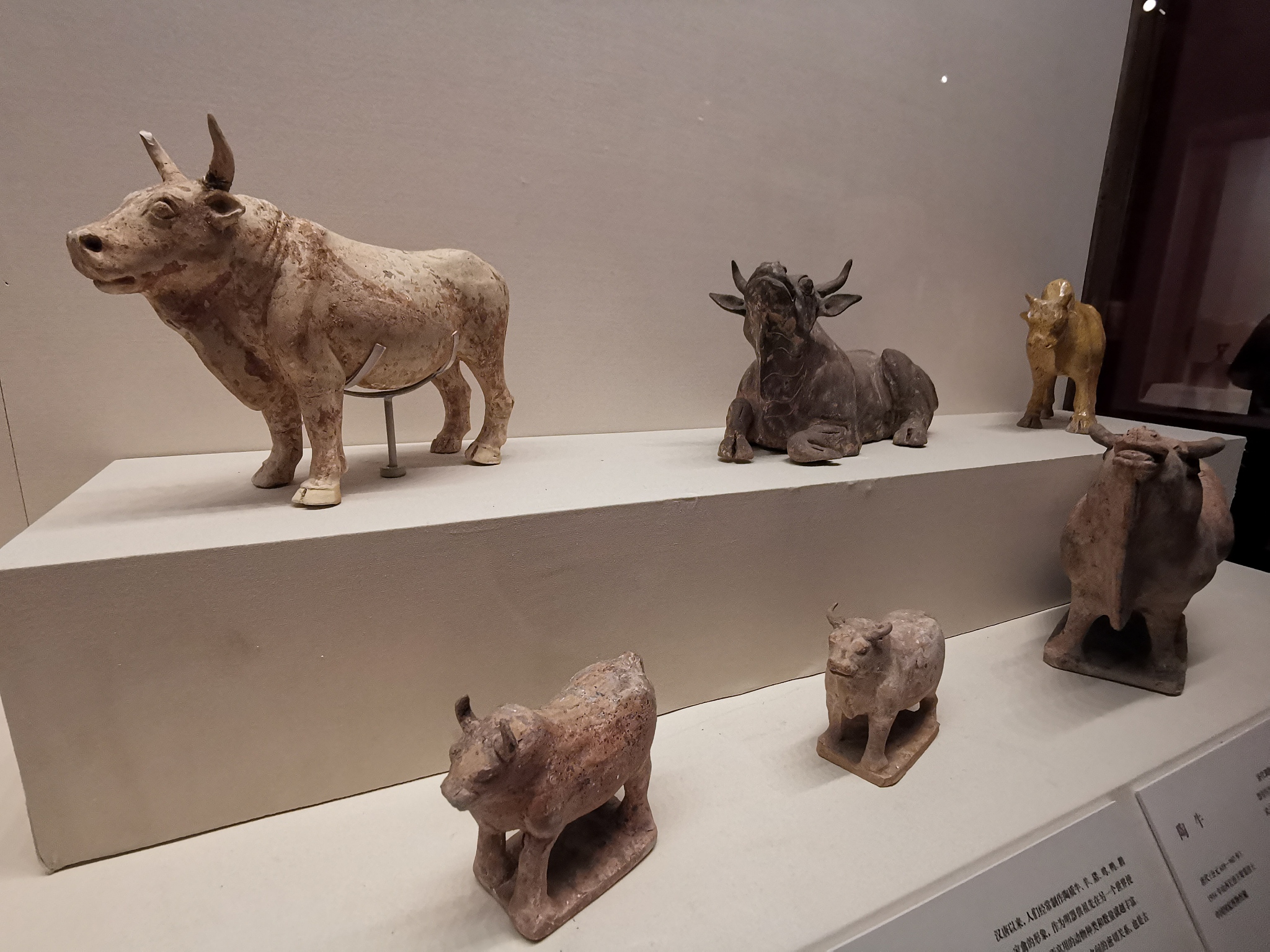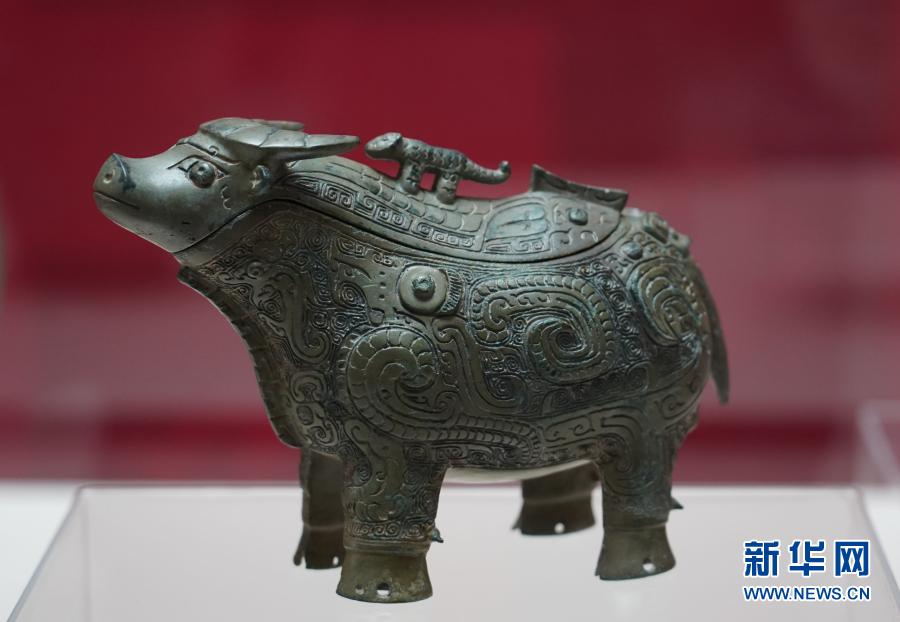
The ox-themed exhibition at the National Museum of China in Beijing, February 12, 2021. /CFP
The ox-themed exhibition at the National Museum of China in Beijing, February 12, 2021. /CFP
Ushering in the Year of the Ox, cultural institutions across China launched various online and offline exhibitions themed at the ox.
The ox is one of the animals most closely related to humans. Since about 10,000 years ago, the ox, dog, horse and other animals were gradually domesticated. They have accompanied humans from gathering food, fishing and hunting to farming and husbandry.
In China, the domesticated ox was transported from West Asia and South Asia about 4,500 years ago, which then integrated into many aspects of Chinese people's lives from production and belief to art creation. So its image has also appeared on many cultural remains along the history, from painting and sculpture to literature.
The three ongoing exhibitions held in Beijing and Shanghai feature the variety of different cultural meanings the ox has in traditional Chinese culture.
The Palace Museum: 'Five Oxen' painting online

"Five Oxen," the earliest extant paper painting in China, is displayed online on the website of the Palace Museum. /CFP
"Five Oxen," the earliest extant paper painting in China, is displayed online on the website of the Palace Museum. /CFP
The Palace Museum has selected 125 cultural relics related to the ox from more than 68,000 pieces in its digital library collections displayed online, including the national treasure "Five Oxen" and other paintings, as well as pottery, jade or bronze artifacts.
"Five Oxen," the earliest extant paper painting in China, is of high artistic and historical value. Artist Han Huang (723-787) portrayed the five oxen with different and vivid appearances, showing his exquisite painting skills.
Han, a prime minister, the highest-ranking executive official in the imperial court during the Tang Dynasty (618-907), paid much attention to agricultural development. And this painting is believed to be his way to encourage agriculture. It also shows how China, a "time-honored" agricultural nation, placed agriculture as the foundation of society.
National Museum: relationship between man and ox

Pottery oxen are displayed on the ox-themed exhibition at the National Museum of China in Beijing, February 12, 2021. /CFP
Pottery oxen are displayed on the ox-themed exhibition at the National Museum of China in Beijing, February 12, 2021. /CFP
The ox-themed exhibition held by the National Museum of China both online and offline highlights the relationship between Chinese people and ox down history.
There are different kinds of ox in China, such as yellow cattle, mostly seen in the north; water buffalo, local to the south; and yaks, native to western China's Qinghai-Tibet Plateau. During the Shang (c.1600-1100 B.C.) and Zhou (1100-221 B.C.) dynasties, the short-horned water buffalo (now extinct) and yellow cattle were closely related to belief or sacrificial activities, so the images of the oxen were commonly used as the shape or pattern of bronze wares.
Since the Han (202 B.C.-AD 220) Dynasty, people created pottery grave articles shaped in livestock and poultry, in the hope of the deceased using them in the nether world. Many such articles have been excavated from the tombs of that time, showing how livestock husbandry thrived in ancient China.
Shanghai Museum: China, South Korea joint exhibition

A bronze ox is displayed on the ox-themed exhibition at Shanghai Museum in Shanghai, February 4, 2021. /Xinhua
A bronze ox is displayed on the ox-themed exhibition at Shanghai Museum in Shanghai, February 4, 2021. /Xinhua
Shanghai Museum for the first time is partnering with the National Museum of Korea to hold a special exchange exhibition focusing on the ox culture.
A total of eight pieces (sets) of artifacts were exhibited in Shanghai, with six domestic artifacts and two pieces – a celadon and an iron ware – from South Korea. Shanghai Museum also exhibited two pieces of its collection in South Korea at the same time.
In both China and South Korea, the ox has been used for multiple functions such as sacrifice, food, farming and transportation, and its image has also been given rich connotations such as diligence, duty, strength, and seclusion. The exhibition is a display of what the ox means to East Asian people.

